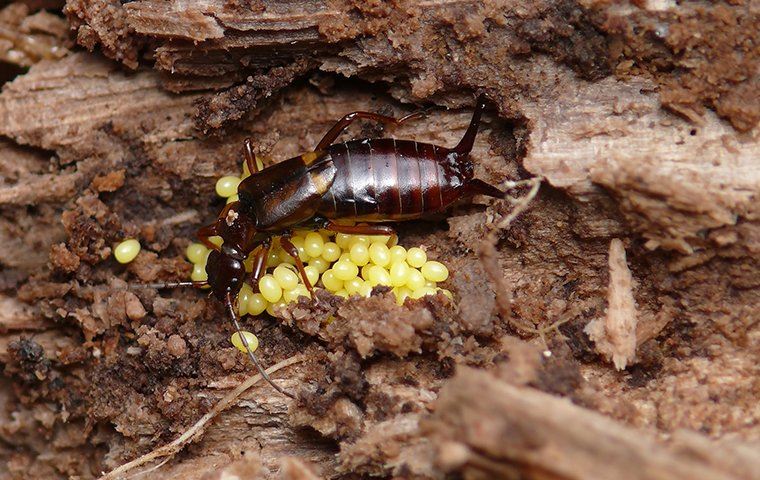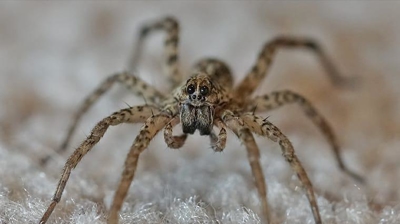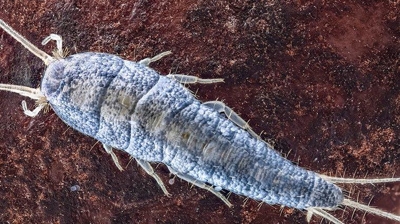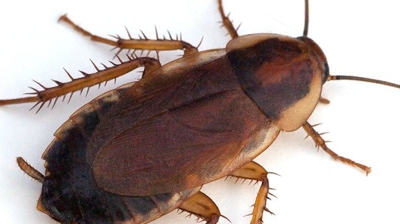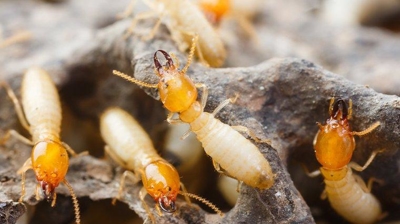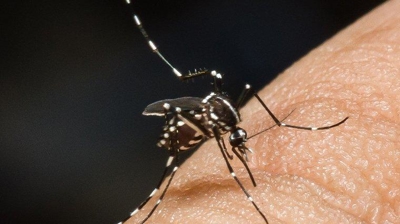
Earwigs
What do earwigs look like?
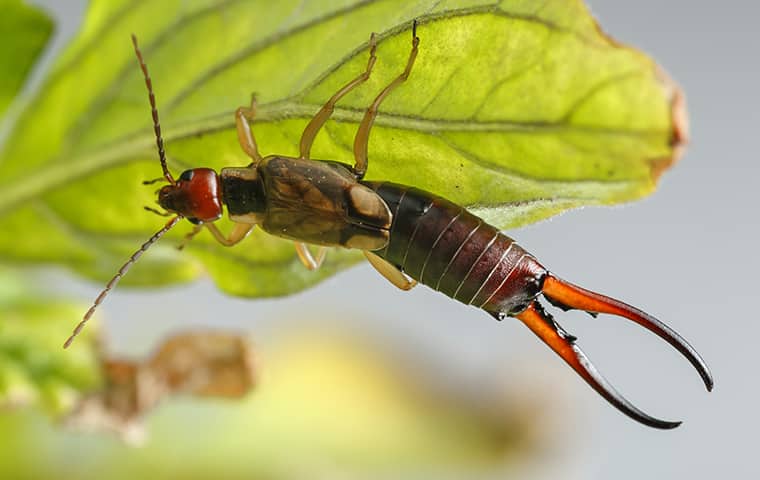
Earwigs are a common lawn and garden pest that property owners deal with on a regular basis. Earwigs are nocturnal, hiding during the day and emerging at night to scavenge and feed on aphids, snails, insect larvae, and plant matter. These insects mainly live outside, but do regularly become a problem inside homes, businesses, and other structures.
Some of the main characteristics of earwigs include:
- A reddish-brown, flattened, elongated body
- Forceps-like appendages (cerci) extending off the end of the abdomen — females have straight cerci; males have curved cerci
- Segmented antennae
- Biting mouthparts
- Six long slender legs
- Wings, but they rarely fly
Are earwigs dangerous?
The name earwig means "ear creature." This name originates from the superstition that earwigs crawl into sleeping people's ears to bore into the brain and lay their eggs. Luckily, there is no truth to this rumor as earwigs lay their eggs in damp soil, not inside our brains.
Earwigs are mainly viewed as garden and agricultural pests, although unless they take over in large numbers, the damage they cause to plants is fairly minimal.
Earwigs pose no real harm to people or our property. They use their cerci (pincers) to catch prey and defend themselves against each other and other insects, but these pincers are not strong enough to cause harm to people. Earwigs do have mouthparts that allow them to bite people, though this is rare and not a concern.
Though earwigs are themselves not dangerous, you should never ignore their presence as it is often an indicator of an underlying moisture problem. Factors like leaky pipes and drainage problems on your property may lead to issues with earwigs and other moisture-seeking pests.
Why do I have an earwig problem?

Why Choose White Knight Pest Control?
-
Expansive Service AreaWe have local offices in several states ensuring accessibility to quality pest control wherever you are!
-
18+ Years in BusinessOur goal as a business continues to be building trusting relationships with our customers & local communities.
-
Customized Treatment PlansEvery home and business is unique! We will tailor a pest control plan to fit your specific needs and budget.
-
Pest Specific Treatment OptionsWhether you're looking for general pest control or targeting one pest specifically, we've got you covered.
How Do I Get Rid of Earwigs?
Get rid of earwigs with the help of White Knight Pest Control. Protecting your home from a pest invasion is our priority! We take the time necessary to build relationships with each of our customers, ensuring we're always meeting your pest control expectations. Our passion is serving others and keeping pests away from people and their properties.
At White Knight Pest Control, we eliminate earwigs and other common pest invaders through our monthly, bi-monthly, and quarterly plan options. To learn more about our home pest control plans or commercial pest control services, give us a call today. Let's work together to keep pests away from your property!
How can I prevent earwigs in the future?
At White Knight Pest Control, we will help you prevent problems with earwigs using our regular, comprehensive treatments. In conjunction with our pest control services, the following prevention tips will help you keep earwigs out of your Texas, Utah, Arizona, Colorado, or Oklahoma home!
- Reduce excess moisture: Earwigs are moisture-seeking pests. Avoid attracting them to your home by keeping the soil around your house as dry as possible. Cut vegetation back away from the exterior to allow the sun to hit the ground and keep it dry. Repair leaky hoses and fixtures and maintain gutters. Do not overwater your lawn or garden.
- Lower humidity levels: Use dehumidifiers and air conditioners to dry out the damp areas in your home.
- Repair entry points: Inspect your foundation and exterior doors, sealing any gaps you find. Place door sweeps on exterior and basement doors. Repair damaged door trim.
- Eliminate debris: Rake mulch and leaves back away from your home's foundation. Get rid of brush piles, leaf piles, logs, and fallen trees from your yard.
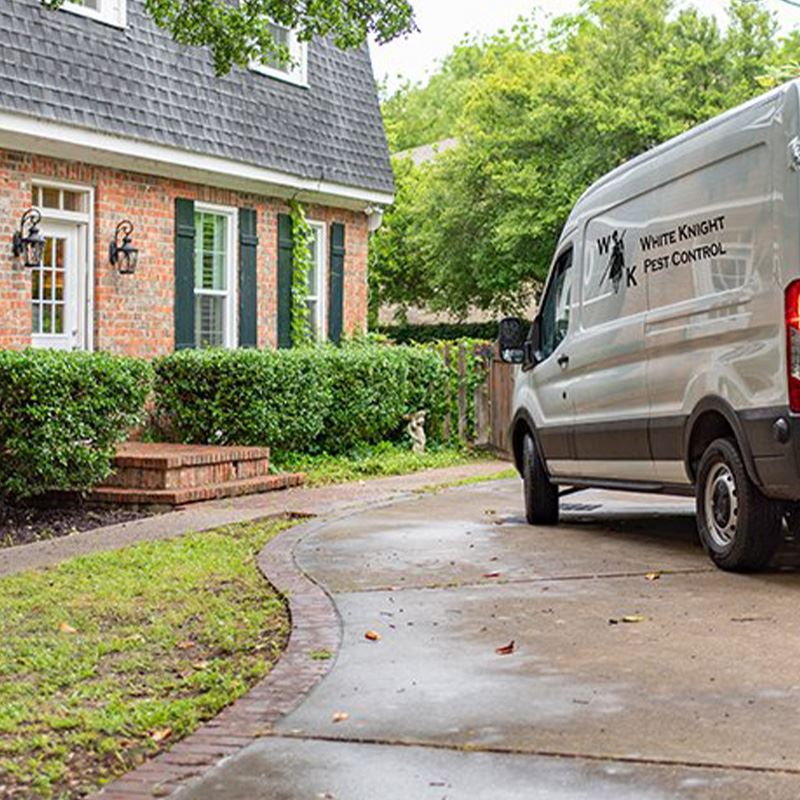
What Our Customers Are Saying
-
"Our technician was Mark and he was very polite, asked questions and did an excellent job doing the service."
Our technician was Mark and he was very polite, asked questions and did an excellent job doing the service. Thank you.
Bill Tefft -
"They are professional, but super friendly and their services are priced wonderfully."
Forest was very kind and professional. He did the work that was explained to us the previous appointment and made sure ...
Lori Bonine -
"Thank you, White Knight!"
Great service! Alex S helped out and he was really efficient, fast and extremely nice and polite. Thank you, White Knight!
Michael Leach -
"Great service!"
Great service! Alex S. helped out and he was really efficient, fast, and extremely nice and polite. Thank you, White Knight!
Eliot Garcia -
"He listened to my concerns, answered my questions, walked me through what he did and how it was going to help resolve our ant issue."
We've been working with White Knight for a few months now. I appreciate that when I called to get a reservice to address an ...
Christine Rominski -
"Tyrell did an amazing job when he came to service our house."
Tyrell did an amazing job when he came to service our house. He took his time and was very informative about the ant hills we ...
Rodin Chery -
"Hope service continues to be this great!"
Aaron showed up to do my first-ever treatment today. He was very kind and I was completely comfortable letting him into my ...
Cortney Love -
"Highly recommend."
Shannon is a very personable technician. Thorough and well-mannered person. Highly recommend. Great job!!!
Hector Suarez
Recent Blog Articles
View our blogs and resources below.
-
 Denver, CO Homeowners' Ultimate Spider Control GuideRead More
Denver, CO Homeowners' Ultimate Spider Control GuideRead More -
 Six Easy & Effective Silverfish-Prevention Tips For San Antonio Property OwnersRead More
Six Easy & Effective Silverfish-Prevention Tips For San Antonio Property OwnersRead More -
 Effective American Cockroach Control In Salt Lake CityRead More
Effective American Cockroach Control In Salt Lake CityRead More -
 What Not To Do About Termites On Your Fort Worth, TX PropertyRead More
What Not To Do About Termites On Your Fort Worth, TX PropertyRead More -
 The Damage Weeds Can Do To Your Salt Lake City LawnRead More
The Damage Weeds Can Do To Your Salt Lake City LawnRead More -
 Four Signs Your Houston Home Has A Bed Bug ProblemRead More
Four Signs Your Houston Home Has A Bed Bug ProblemRead More -
 The Trick To Effective Centipede & Millipede Control In Your Denver HomeRead More
The Trick To Effective Centipede & Millipede Control In Your Denver HomeRead More -
 A Handy Guide To Mosquito Prevention For Phoenix Property OwnersRead More
A Handy Guide To Mosquito Prevention For Phoenix Property OwnersRead More
